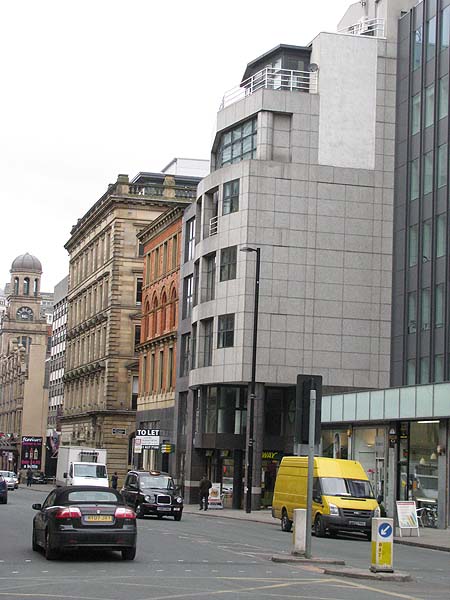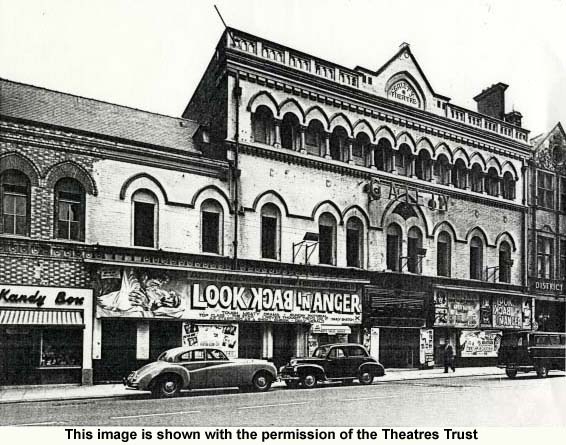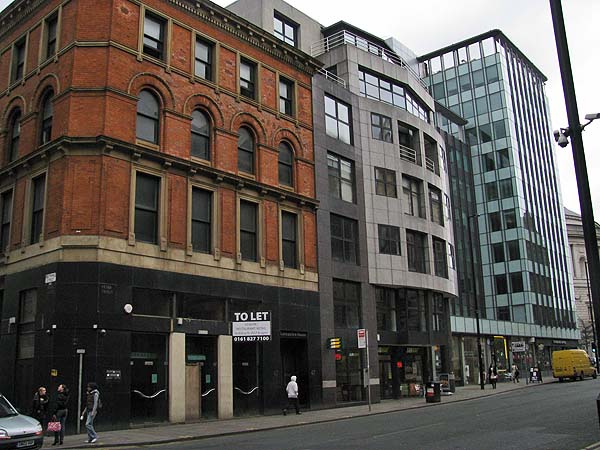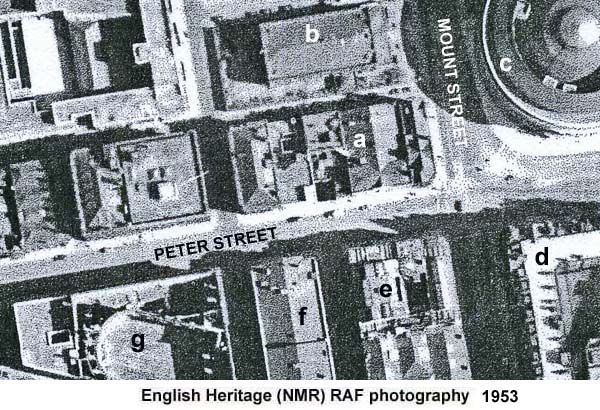49 Peter
Street



49 Peter Street, a
concrete framed building clad in polished granite.
It was designed by the architectural practice of Mills
Beaumont Leavey and built in 1992. It is a modern
office building arranged over ground and 6 upper floors.


****************
This was once the site of the Comedy Theatre later called the Gaiety Theatre.


****************
This was once the site of the Comedy Theatre later called the Gaiety Theatre.

The Comedy Theatre
opened for business in 1884 across Peter Street from the
Theatre Royal and St. George's House, the YMCA.
The architect was Alfred Derbyshire, a pupil of Richard
Lane, the man who designed the nearby Friend's Meeting
House. Derbyshire had an interest in amateur
dramatics and through that he met Alexander Calvert who
commissioned him to enlarge and equip the Princes
Theatre on Oxford Street. This led to an
oportunity to redecorate the Lyceum in London for Henry
Irving. Derbyshire collaborated with Irving on the
development of a safety plan for theatre design.
This included the addition of an asbestos curtain to
isolate the stage from the auditorium. He
incorporated some of these ideas in the design of the
Comedy Theatre.

Cecil Stewart, in "The
Stones of Manchester", says this about the Comedy
Theatre: "This building is almost opposite the Free
Trade Hall, both in its siting and character.
There is no pompous Renaissance dignity about
it. There is impudence." Initially the
theatre had a capacity of 2,500. It had a proscenium
arch stage that was 27' deep and 31' 6" and 25' to the
top of the proscenium. It had an orchestra pit.

| a. The
Comedy/Gaiety Theatre |
b. The
Friend's Meeting House |
| c.
Central Library |
d.
Midland Hotel |
| e. St
George's House YMCA |
f.
Theatre Royal |
| g. The
Free Trade Hall - gutted by WII bombing |
In 1908 the theatre
was sold to Annie Horniman. Horniman was a
theatre patron whose interest in repertory and
acquaintence with Yeats led to her build the famous
Abbey Theatre in Dublin in 1904. She bought the
Comedy Theatre for £25,000, and commissioned Frank
Matcham to redesign it. It reopened in 1912 as
the Gaiety Theatre with a reduced capacity of
1,300. The Gaiety operated as a live theatre
until 1922. Later it became a cinema. The
Theatre was demolished in 1959.